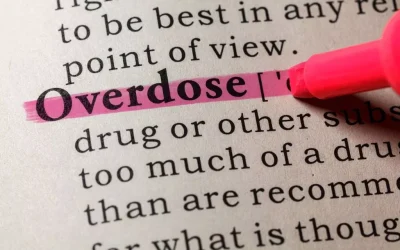The most commonly used term is “alcoholism.” However, while alcoholism is commonly used, it is not a medical term for problem drinkers. Delirium tremens is a symptom of severe alcohol withdrawal that can be potentially fatal. Contact emergency services immediately if you experience symptoms such as fever, involuntary muscle contractions, seizures, delusions, hallucinations, or rapid mood swings as you withdraw from alcohol. Looking at the symptoms mentioned above can give you an idea of how your drinking may fall into harmful patterns and indicate whether or not you have a drinking problem. With alcoholism, the most important component for alcohol treatment is usually time. A person may need varying levels of care with ‘step-down’ levels to foster long-term sobriety.
Mutual support groups
As you might have noticed, none of these criteria specify an amount of alcohol. Because denial is common, you may feel like you don’t have a problem with drinking. You might not recognize how much you drink or how many problems in your life are related to alcohol use. Listen to relatives, friends or co-workers when they ask you to examine your drinking habits or to seek help. Consider talking with someone who has had a problem with drinking but has stopped.
Take The First Step to a New Life
“Addressing the societal and economic conditions that give rise to child maltreatment can play a large part in preventing mental disorders at a national level,” Dr Grummitt said. The analysis also found that if childhood maltreatment was eradicated in Australia, more than 1.8 million 9 common myths about substance addiction all you need to know cases of depression, anxiety and substance use disorders could be prevented. How It Has Been Problematic Yet Holds Promise for Addressing College Drinking,” Dr. Steers discussed the relationship between social media and alcohol consumption, particularly among college students.
Childhood maltreatment responsible for up to 40 percent of mental health conditions
Many of the effects of drinking every day can be reversed through early intervention. If you are struggling with excessive alcohol consumption, it is best to seek help. You can attend a 12-step program like Alcoholics Anonymous or, if your symptoms are more severe, you can find an alcoholism treatment program. The Diagnostic and Statistical Manual of Mental Disorders (DSM) classifies various mental illnesses and disorders. Mental health professionals use it nationwide to categorize and diagnose individuals seeking treatment.
- Mental health professionals use it nationwide to categorize and diagnose individuals seeking treatment.
- There is no known safe amount of alcohol consumption for women who are pregnant or might become pregnant.
- There are many different terms used to describe disordered drinking and problem drinking.
- Understanding the distinctions between alcohol abuse and alcoholism is crucial for recognizing the severity and implications of each condition.
Treatment for the High Functioning Alcoholic
If your pattern of drinking results in repeated significant distress and problems functioning in your daily life, you likely have alcohol use disorder. However, even a mild disorder can escalate and lead to serious problems, so early treatment is important. Unhealthy alcohol use includes any alcohol use that puts your health or safety at risk or causes other alcohol-related problems. It also includes binge drinking — a pattern of drinking where a male has five or more drinks within two hours or a female has at least four drinks within two hours. Binge drinking causes significant health and safety risks.
Alcohol use disorder is a diagnosis used by medical professionals to describe someone with an alcohol problem to varying degrees. Alcoholism is a non-medical term used most often in everyday language and within the rooms of Alcoholics Anonymous. Individuals with alcoholism have many of the symptoms listed in the DSM-V criteria.
AUD is a relapsing disease, meaning that individuals can experience periods of recovery followed by setbacks or relapses. Despite its chronic nature, AUD can go into remission with appropriate treatment, which may include behavioral therapies, medications, and support groups. Alcoholism, also known as Alcohol use disorder (AUD), is a chronic brain disease characterized by an inability to control xanax side effects or abstain from alcohol despite adverse social, occupational, or health consequences. It is recognized by patterns of compulsive alcohol use, a lack of control over alcohol intake, and a negative emotional state when not using. Symptoms include a strong craving for alcohol, continued use despite recurrent problems resulting from drinking, and the development of tolerance or withdrawal symptoms.
Keep in mind that, while helpful in determining whether your current drinking habits could be problematic, these tests should not be considered a medical diagnosis. Continue reading to learn the differences between problem drinking vs. alcoholism, how problem drinking can lead to addiction, the definition of alcoholism, how to cut back or seek treatment if necessary. Combatting the ever-growing drug epidemic that this country faces begins with you.
Thankfully, substance abuse treatment programs like Moving Mountains Recovery Center provide individuals with a safe and comfortable place to recover from alcoholism. Contact us today for more information on our alcohol rehab programs. It is important to note that alcoholism is not a medical term. Instead, it is a term that was primarily coined by individuals who suffer from and have recovered from alcohol abuse, addiction, and alcohol use disorder.
” then you might want to know the difference between a drinking problem and alcoholism, also known as alcohol addiction or alcohol use disorder (AUD). In other words, an individual will never be diagnosed with alcoholism by a psychiatrist or medical professional. Instead, individuals will be given the diagnosis of alcohol use disorder. However, people who attend an alcohol rehab program or 12-step recovery meetings will primarily hear the term alcoholism rather than AUD.
Whether you drink every day or are a weekend binger, if you drink more than expected or continue to drink despite the consequences, you may be an alcoholic. These drinkers may have a drink or two in social settings or on occasion. Casual drinkers typically have little to no difficulty controlling the amount they drink and how often they drink. Similarly, these clinical experience of baclofen in alcohol dependence individuals don’t blackout while drinking or engage in risky behaviors while under the influence of alcohol. However, people who regularly abuse alcohol run a high risk of developing alcoholism. Continually exposing the body to alcohol can result in the body developing a tolerance and becoming dependent on alcohol, which are key factors in alcoholism.
Conversely, alcoholism encompasses all the effects of alcohol abuse but also includes physical dependence. This chronic disease often results in severe psychological and physical health issues, such as liver disease, cardiovascular problems, and mental health disorders. The long-term impact of alcoholism can be more devastating, with potential for irreversible damage to one’s health, personal relationships, and social standing. Research suggests that between 50% and 60% of the risk for AUD is genetic, with environmental factors also playing a significant role. The interaction between a person’s genetic makeup, environmental stressors, and drinking history can influence their vulnerability to AUD. Long-term alcohol use can lead to changes in the brain that exacerbate cravings and loss of control over drinking, requiring greater quantities of alcohol to achieve its effects.
Binge drinking, one of these patterns, involves consuming several drinks in a short period of time. An episode of binge drinking can bring your blood alcohol content (BAC) to dangerous, even life-threatening levels. As a result, you might experience a blackout, vomit, or even pass out. AUD describes a diagnosable condition that involves drinking alcohol excessively or uncontrollably to the point that it negatively affects your life or health.…



 …
…